As an ecommerce business owner, driving conversions through Facebook advertising can be key to your success 🚀 With over 2.7 billion monthly active users, Facebook offers a vast audience for you to target with your ads. However, with so much competition, it’s important to make sure your ad campaigns are optimized for conversion. 💡
In this article, we’ll go over the steps you can follow to set up a very optimized Facebook ad campaign for conversion for your ecommerce business 🛒
Introduction:
Facebook advertising can be a powerful tool for ecommerce businesses, providing access to a vast and diverse audience and the ability to drive conversions. However, with so much competition, it’s essential to make sure your ad campaigns are optimized for conversion. In this article, we’ll go over the steps you can follow to set up a highly optimized Facebook ad campaign for your ecommerce business, including identifying your target audience, choosing the right objective, creating compelling ad copy and visuals, setting up conversion tracking, using retargeting, and testing and optimizing your ad campaigns.
- Identify your target audience 🎯
Before you can start running ads, you need to know who you want to reach. Consider your ideal customer and think about their demographics, interests, and behaviors. You can use Facebook’s Audience Insights tool to get a better understanding of your target audience and their interests. This tool allows you to see demographic information, interests, and behaviors of people on Facebook and can help you identify potential customers for your business.
- Choose the right objective for your ad campaign 🎯
Facebook offers a variety of objectives for ad campaigns, including brand awareness, traffic, and conversions. For an ecommerce business, the most relevant objective is likely “conversions.” This objective is designed to drive specific actions, such as adding items to a shopping cart or making a purchase. When setting up your ad campaign, be sure to select the “conversions” objective to ensure that your ads are optimized for driving conversions.
- Create compelling ad copy and visuals 📝
Your ad copy and visuals should be tailored to your target audience and should clearly communicate the value of your product or service. Use strong headlines, compelling images, and a clear call to action to grab the attention of your audience and persuade them to take action. A/B testing different versions of your ad copy and visuals can be a helpful way to determine which versions are most effective at driving conversions.
- Set up conversion tracking 📊
To measure the success of your ad campaigns, you need to set up conversion tracking. This allows you to see which ads are driving the most conversions and where improvements can be made. To set up conversion tracking, you’ll need to install the Facebook pixel on your website and create a conversion event. The Facebook pixel is a piece of code that you install on your website, which allows you to track the actions people take on your website and use this information to create better-targeted ads.
- Use retargeting to drive conversions 🎯
Retargeting allows you to show ads to people who have visited your website but haven’t made a purchase. This can be an effective way to drive conversions, as these people are already interested in your products or services. You can set up retargeting through the Facebook pixel or through a retargeting platform like AdRoll. To set up retargeting through the Facebook pixel, you’ll need to create a Custom Audience based on people who have visited your website and then create a retargeting ad campaign targeting this audience.
- Test and optimize your ad campaigns 🧪
To ensure the success of your ad campaigns, it’s important to continually test and optimize them. Experiment with different ad copy, visuals, and targeting to see what works best. Use the insights and data from your conversion tracking to make informed decisions about what to change and how to improve your campaigns. In addition to A/B testing your ad copy and visuals, you can also try testing different targeting options, such as different age ranges or interests, to see what works best for your business.
Conclusion:
By following these steps, you can set up a very optimized Facebook ad campaign for conversion for your ecommerce business. With the right targeting, compelling ad copy and visuals, conversion tracking, and optimization, you can drive more conversions and grow your business through Facebook advertising. Don’t be afraid to experiment and try new things – the more you test and optimize your campaigns, the better your results will be.
In addition to the steps outlined above, there are a few technical details you should be aware of when setting up and managing your Facebook ad campaigns through the Ads Manager or Business Manager.
- Facebook Ads Manager: This is the main platform for creating and managing Facebook ad campaigns. Within the Ads Manager, you can create ad campaigns, set budgets and bid strategies, target specific audiences, and track the performance of your ads.
- Facebook Business Manager: This is a separate platform that allows you to manage multiple ad accounts, pages, and assets in one place. It’s particularly useful for businesses that have multiple people working on their Facebook advertising or that have multiple ad accounts.
- Metrics and KPI: When setting up and managing your ad campaigns, it’s important to track key metrics and KPIs (Key Performance Indicators) to understand how your campaigns are performing. Some common metrics and KPIs for ecommerce businesses include cost per acquisition (CPA), return on ad spend (ROAS), and conversion rate. By tracking these metrics, you can identify areas for improvement and optimize your campaigns for better performance.
By understanding the technical details of the Ads Manager and Business Manager, as well as the importance of tracking metrics and KPIs, you can ensure that your Facebook ad campaigns are set up for success. Good luck! 🍀

